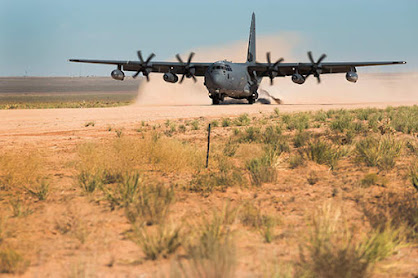Flaps Controlled by Hydraulics
Flaps on an aircraft can be a very important secondary flight control system depending on various types of landings or even runway length available. I'm going to use the MC-130J Commando II as an example. This aircraft has Fowler Type flaps which are considered high lift (Jan 2021). When we want to land on a short runway, we have to land between 300 and 540 feet per minute descent rate. If we couldn't roll flaps to 100%, this would not be possible as we could not get the airplane slowed fast enough. The flaps are controlled by the utility hydraulic system from an electronic controlled flaps lever. In the event we can't lower or raise the flaps through normal methods, we have to remove the electronic control from the mission computer and operate them using manual hydraulic control valves. However, by doing this it takes away the asymmetric flap protection. There are also further ways of operating the flaps in the event we were to lose hydraulic control. The way to mitigate or reduce the possible chances of losing control of your flaps is to test them on the ground. Now during the pre-flight, the engines are not running therefore we can not get utility hydraulics since those pumps are engine-driven pumps. We can tie the auxiliary hydraulic system, which is electrically driven, to the utility system through a valve that allows us to move and check the flaps for movement on the ground.
Flaps. SKYbrary Aviation Safety. (2021, January 8). Retrieved February 23, 2022, from https://skybrary.aero/articles/flaps



Comments
Post a Comment